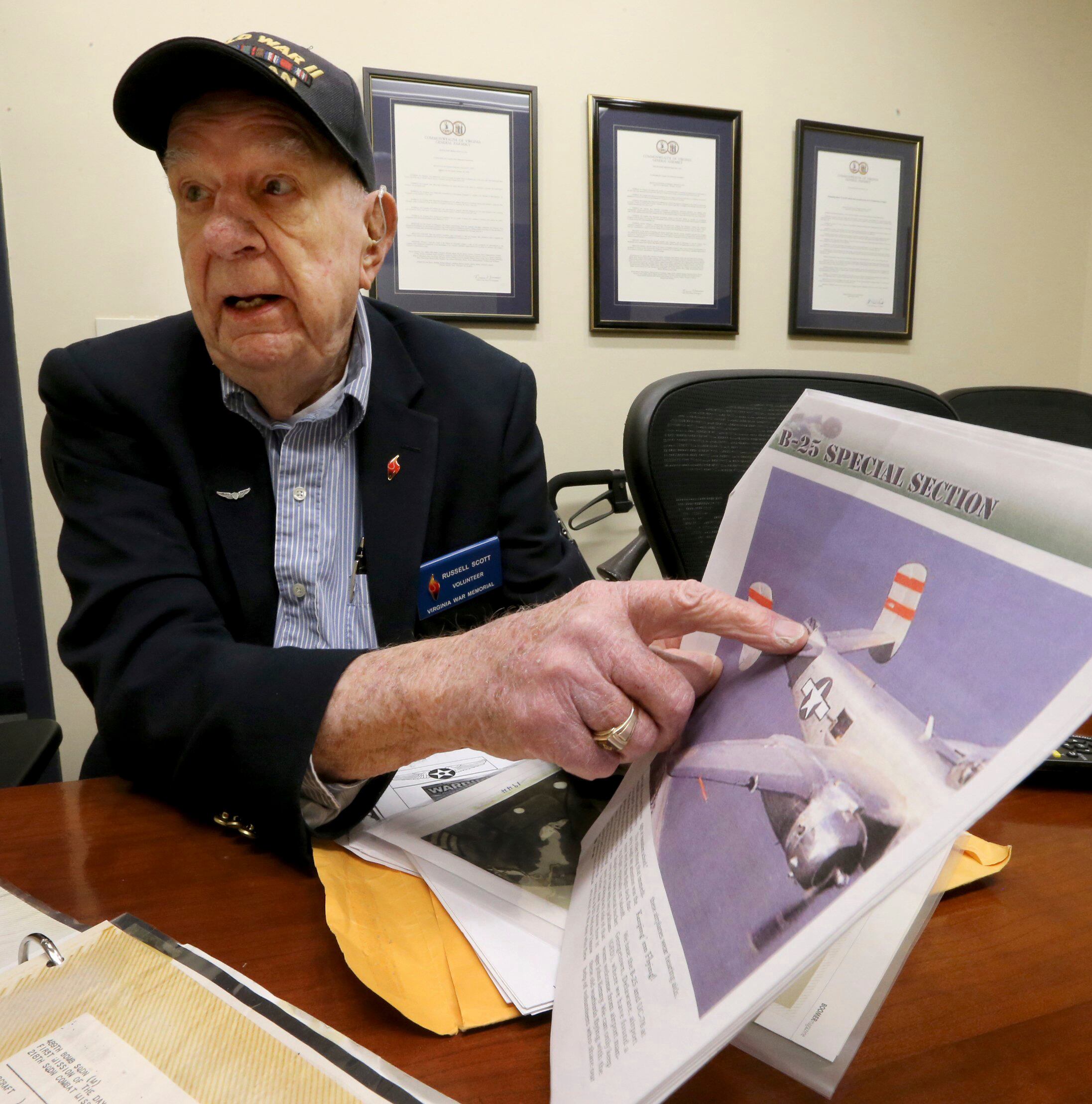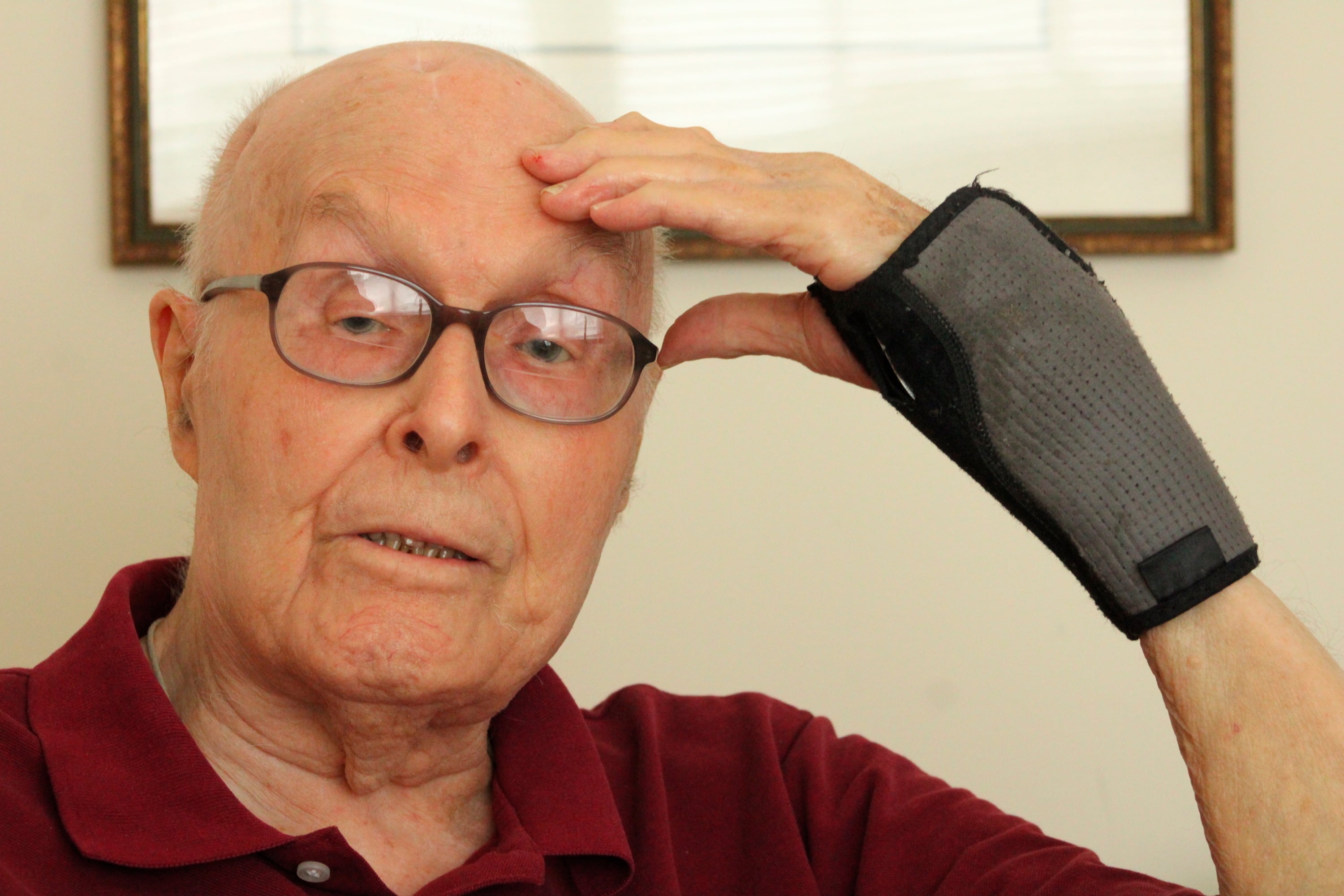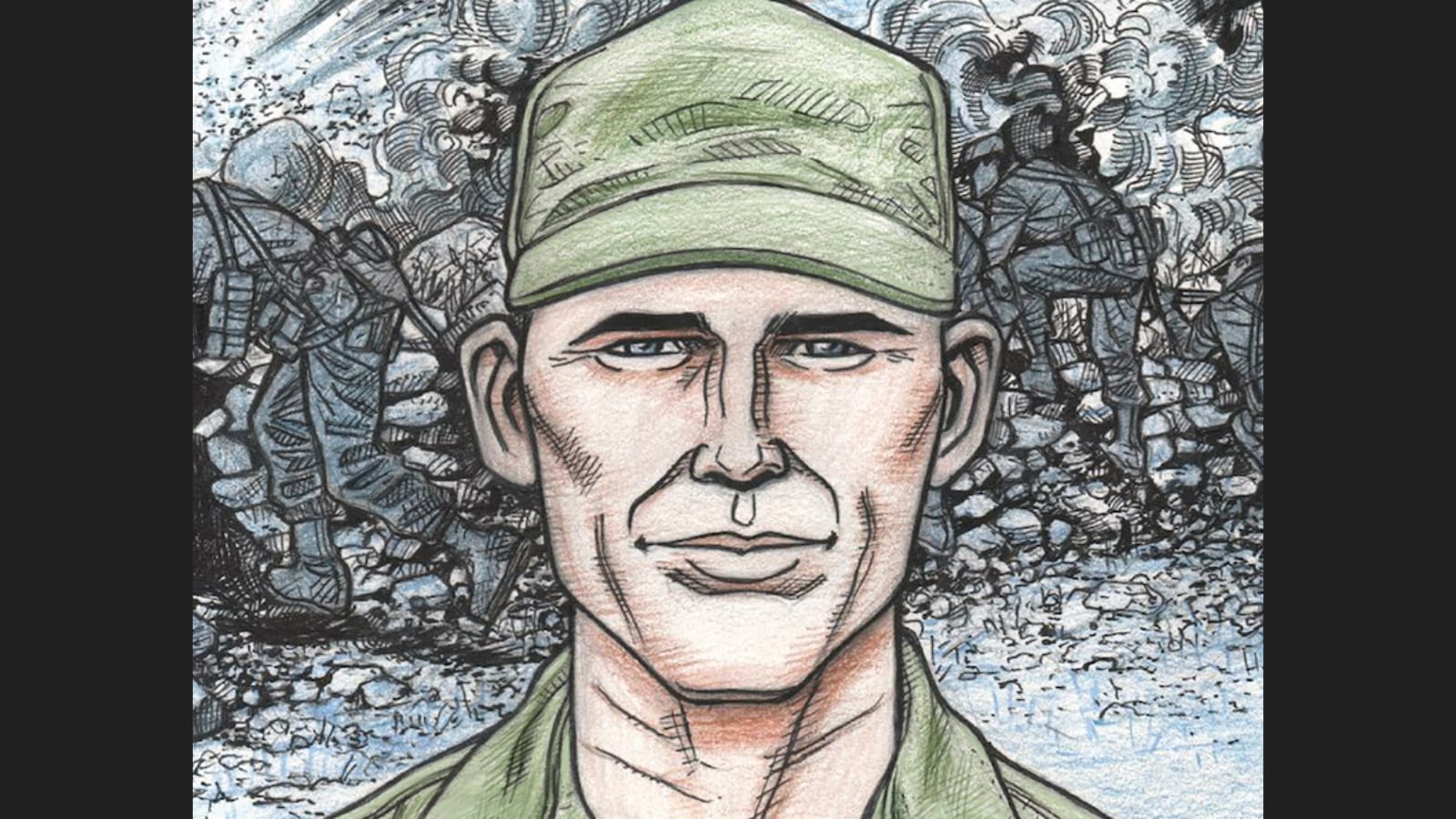RICHMOND, Va. — World War II veteran Russell L. Scott, comic book hero.
Well, sure, why not?
The late Scott, a B-25 tail gunner in the U.S. Army Air Corps who was held as a prisoner of war, certainly had a story to tell. To sum up, as he told me in 2014, seven decades after it all happened in 1944, “I got to Corsica on the 18th of May. On the 23rd of May, I went on my first mission. And on the 25th of May, I went on my last mission.”
The mission on May 25 was his last because enemy fire hit his B-25 over Italy. Scott attempted to bail out, but the escape hatch wouldn’t open, so he had to head-butt the canopy over the tail gunner’s position to get out, said Ralph Fields, who volunteered with Scott at the Virginia War Memorial and became a close friend.

Scott slid onto the plane’s tail assembly as the plane was going down, sitting there momentarily with his feet dangling. The reason for his hesitation? He had a parachute, but he had never used it.
“He said the ground kept getting closer and closer and that helped him make up his mind,” Fields recalled. “He just had a way of telling his story that fascinated everybody.”
Scott hit the ground awkwardly, suffering a broken back, and was immediately captured by Germans, leading to a long journey of being moved as a prisoner of war from Italy to Germany to Poland and back to Germany.
At one prison camp, he transformed powdered milk cans into stovepipes — he’d done body-and-fender work back home so he was familiar with working with metal — so the coal stoves in each crowded room wouldn’t asphyxiate the inhabitants. He surely saved lives.
He survived the war, returned to his native Richmond and became a longtime volunteer at the local veterans hospital as well as at the Virginia War Memorial. He died in 2019 at age 99.
RELATED

But his story lives on.
Virginia Commonwealth University student Maggie Colangelo, a senior and double-major in VCU Arts and environmental studies who also works in the university’s Virtual Curation Laboratory, was intrigued when she heard about Scott’s story and set about creating a detailed, three-panel comic, describing his harrowing experience.
“Comics are a great way to reach out to people,” Colangelo said. “When you’re trying to get kids to read, it’s way easier to hand them a comic than to get them to slog through a whole chapter book.”
Her comics, which she creates digitally, represent visual learning, but they also convey actual information.
“I’ve really found a niche that I like in making educational comics,” said Colangelo, who also has created comics about the Founding Fathers’ obsession with giant Ice Age animals and the Isle of Wight County Museum’s “World’s Oldest Ham.”
Her goal is to make her comics “humorous and interesting” because she remembers when she was growing up “history was my least favorite subject.
“Which is odd because there are so many interesting things happening in history,” said Colangelo, who lives in Ashburn. “It should be the most amazing class ever, but somehow it was just the most endless hour of my life every class.”
Colangelo learned about Scott from Bernard K. Means, an assistant anthropology professor at VCU and director of the Virtual Curation Lab, who had worked with Scott on another project a few years ago.
RELATED

Means met Scott in the fall of 2014 while he was doing a 3-D scanning demonstration at the Virginia War Memorial; the lab partners with museums around the world, using 3-D object-scanning to record artifacts, fossils and historic objects for analysis, conservation and educational outreach.
Means learned of Scott’s story that day, as well as plans to display a model of the B-25 Scott flew aboard. He made a 3-D scan of Scott right then and there, with the idea of producing a miniature model of Scott to go on exhibit with the model plane.
Means used his lab’s 3-D printers to create a plastic model of Scott that was scaled to the size of the B-25 model. Chelsea Miller, then a VCU history major who was interning at the war memorial, researched WWII-era uniforms and painted the miniature of Scott so it looks like the flight suit he wore then.
The miniature B-25, with Scott perched on the tail assembly, remains on display at the war memorial, hanging from the ceiling in the lobby of the Paul and Phyllis Galanti Education Center. When he leads tours at the war memorial, Fields often starts by pointing out the B-25 and talking about Scott.
“He was kind of like a brother,” said Fields, whose own brother was killed in World War II when his plane was shot down over Germany. “The first day I met Russell, we just kind of bonded. We had so much in common.”
In 2017, Fields accompanied Scott on a ride in a B-25 similar to the one Scott had flown in. He describes it as a highlight.
“I got to fly with a World War II tail gunner in a World War II bomber, which was quite special,” Fields said.
It was Fields who set in motion the events that led to the lobby exhibit. Some years back, he spied a radio-controlled B-25 with a 9-foot wingspan for sale at the Williamsburg Antique Mall. He told Scott about it at one of their Wednesday volunteer shifts, and they drove to Williamsburg in Fields’ pickup truck that afternoon. Scott fell in love with it and bought it on the spot and then donated it to the war memorial.
“He’d always tell everybody I made him spend all his money on that airplane,” Fields said. “Russell had this wonderful sense of humor. He loved to cut up and tease and all. He was just a very special person.”
And a charmer.
“He told my wife he didn’t have any wrinkles because he smiled all the time,” he said. “Everybody loved Russell.”
When he and Scott were leading tours together, Fields would tell groups, “You picked the perfect time to visit the war memorial because you’re going to meet a real-life World War II hero.” Funny thing, though, Fields said, “Russell never considered himself a hero.”
So, what would Scott think of being the star of a 21st-century comic?
“I think he would like it,” Fields said.
VCU’s Means agreed, although Scott might have been bemused to be the subject of such a project, but not because he was unfamiliar with the medium. Comics were very popular among U.S. soldiers during World War II, Means said, and he bets Scott “read a ton of comic books.”





